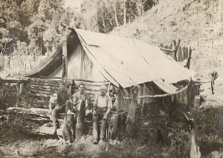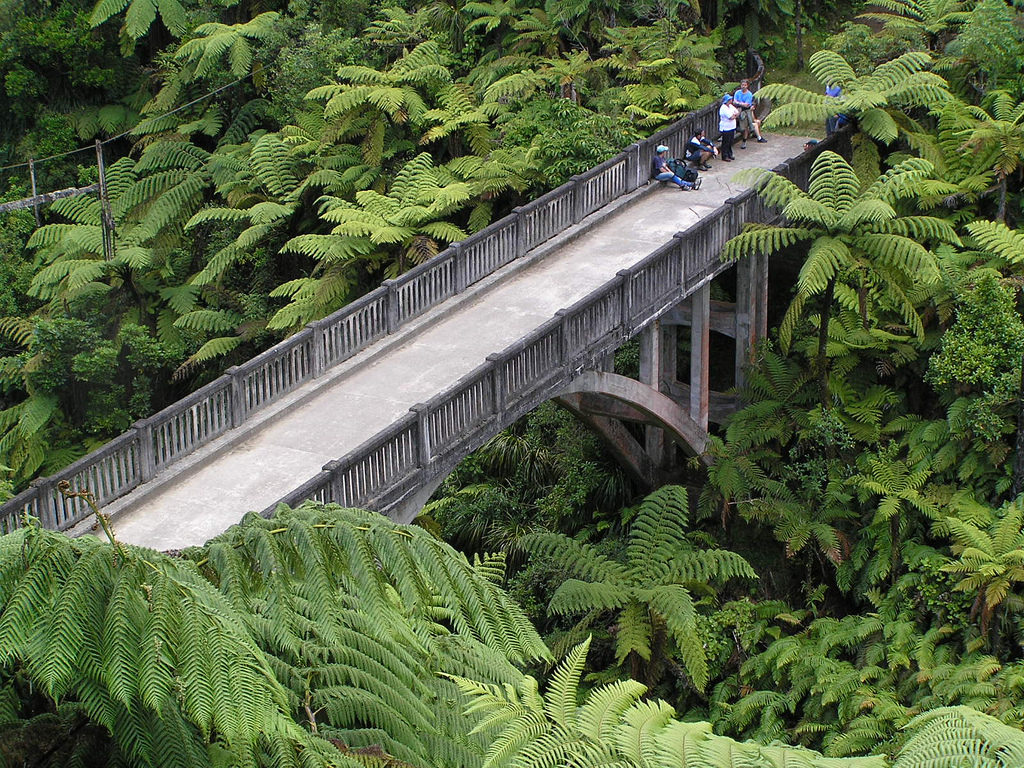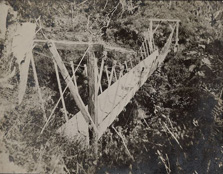Known as the “Valley of Abandoned Dreams”, the sad story of a government plan to provide work for returned servicemen, has left one legacy that has become increasingly popular with young tourists to New Zealand
Although I have been to most parts of New Zealand, the central west of the North Island is an area I have not set foot on. However, The Bridge to Nowhere has always fascinated me and looking at photos of the concrete structure surrounded by thick native bush, gives it the look of a place only found in a kid’s story book.
The bridge spans the Mangapurua Stream in the Whanganui National Park. Although it has no roads leading to it, it can be reached by mountain bike or by tramping on a variety of bush trails. It can also be reached by boat or kayak.
NEW LAND
Under the Discharged Soldiers Settlement Act 1915, the government opened up land for development by servicemen returning from the horrors of the First World War. Many of these men suffered from physical limitations due to injuries suffered during the war.
The remote Mangapurua Valley was to be divided into 40 bush-covered blocks, ranging from around 300 to 1,800 acres. The area was 17 miles upriver from Pipiriki, at that time, the Whanganui River’s main ‘port’ for river ferry services. The first farmers moved into the valley in 1916. The bush was so dense that it took a staggering 12 years to hack a rough road through it. The area was also cold and wet, not the ideal location for injured men to easily live in, but they were desperate and willing to take up the government’s offer to develop this unforgiving land.
FIRST BRIDGE
A wooden swing bridge was constructed across the Mangapurua Stream in 1919. It was used to precariously carry people, animals and heavy materials across the scary ravine. However, when the bridge quickly began to rot due to the ubiquitous fog over the damp valley, (Mangapurua means ‘plenty of water’ in Maori) the settlers expected road access would be improved with a more solid bridge that would also form part of a road through to Taranaki.
At the time, no research was done into the suitability of the land for agricultural use. It just happened to be an area the government wanted to use in some way. It seemed a good idea at the time to open it up to unemployed men who needed something to occupy them and ease them back into a normal life and of course, to also provide an income.
CONCRETE BRIDGE
By the early 1930s, the government agreed to help the long suffering settlers in the Mangapurua Valley by paying for a new sturdy bridge to provide them access to the Whanganui River and the ferry services available on it.
Started in January 1935, and costing 1018 pounds, excluding materials, the Bridge to Nowhere was built 40 metres (132 ft) above the deep Mangapurua Gorge by the Public Works Department with the intention to build roads to it later. Completion of the imposing structure, 130 feet (39m) long was delayed considerably due to floods, slips, and the consequent delay in the supply of materials to the site and the bridge wasn’t ready for traffic until June 1936.
On opening day, one official car drove across the bridge but even then, it went nowhere. The vehicle had to return the way it came as the bridal path at the far side of the bridge was too narrow for it to continue.
DIFFICULT TIME
By the time the bridge was completed, some virgin forest had been cleared, and a total of 35 of the planned 40 holdings had been established. A school was opened in 1926, and for some years the valley’s settlers made ends meet and supported each other in their mutual hardships. However, problems associated with the remoteness and difficulty of access, resulted in many families abandoning their farms. In the early days, food supplies were only delivered twice a year so tinned corned beef and potato bread were the staples provided in the cold, draughty, damp huts. It was also the backbreaking work of pushing back the ever encroaching forest that drove families from the valley. For some, it took a few hours along muddy tracks just to visit the nearest neighbour. Things weren’t helped when a year after the bridge was opened, the county council refused to fund the maintenance of 10 miles of the access road from the river. After a major flood in January 1942, the 7th big flood since 1931, the Government stopped making funds available for road improvements. The 3 remaining families packed up and left the valley and the settlement was officially closed in May 1942.
By 1944, the valley was completely abandoned.
Disappearing road lines, old fences, stands of exotic trees, occasional brick chimneys, and the Bridge to Nowhere serve as melancholic reminders of the ill-fated settlement of the Mangapurua Valley.
 Farmer Hut in Mangapurua Valley
Farmer Hut in Mangapurua Valley
The Mangapurua Valley project has to be one of the saddest episodes in New Zealand’s colonial history. Many of the men who headed these families struggled with war injuries. They worked hard in a truly hostile environment to try and make a living from the land but in the end, they were forced off with nothing to show for their hard work. They moved penniless to urban areas and had to start over during a time of economic difficulties and high unemployment.
The saga of the Mangapurua Valley families really deserves the title of New Zealand’s “Valley of Abandoned Dreams”.
Ceidrik Heward






















 Visit Today : 346
Visit Today : 346 Total Visit : 1072287
Total Visit : 1072287